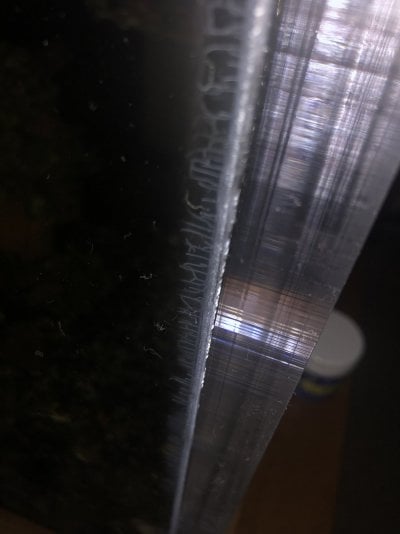What is crazing?
Crazing is the formation of thousands of micro cracks in acrylic. These cracks can appear suddenly or over time and can be on the surface (both outside and inside the tank) as well as in the acrylic itself. Often the stand pat answer given as that the hapless hobbyist used the dreaded Windex cleaner and this caused a chemical reaction. While this MAY be true in instances of repeated multiple times per day use, the far more common cause is severe and sudden thermo stress of the acrylic.
A good analogy is when you pour very hot or very cold water into a thick glass container. The sudden temperature change causes the glass to expand or contract rapidly at the surface while the core stays cool. This stress at the molecular level causes the glass to shatter. The same thing happens to acrylic.
Where does this sudden temperature change come from you ask.
Two primary sources. The first is the heating strip. Most commercial heating strips have a very narrow heat zone. Trying to heat acrylic to form a bend using these types of heaters will cause the formation of those micro fissures. They are most often invisible to the eye. But once crazing begins, IT WILL NOT STOP. It may be an all of a sudden (over a few days in aquarium time) or gradual. But it will continue from one edge to the other.
The second cause of crazing is flame polishing of the seams. Again, just like the example above, severe molecular level stresses cause the micro fissures resulting in crazing.
Also the type of acrylic can be a contributing factor but not the primary cause. Cell cast acrylic is less susceptible than the continuous cast. But this is a contributory factor, not the primary.
How to prevent crazing
Use proper heating and forming equipment. This is hard to do. Our heating and forming equipment is custom manufactured and not readily available. If fabricators cannot form bends without causing stress fractures, then simply stick with square corner fabs.
Do not flame polish. Enough said.
Another cause of crazing is the use of the wrong saw blade while cutting (AND DRILLING) sheets to size. Be sure to use blades intended for acrylic.










